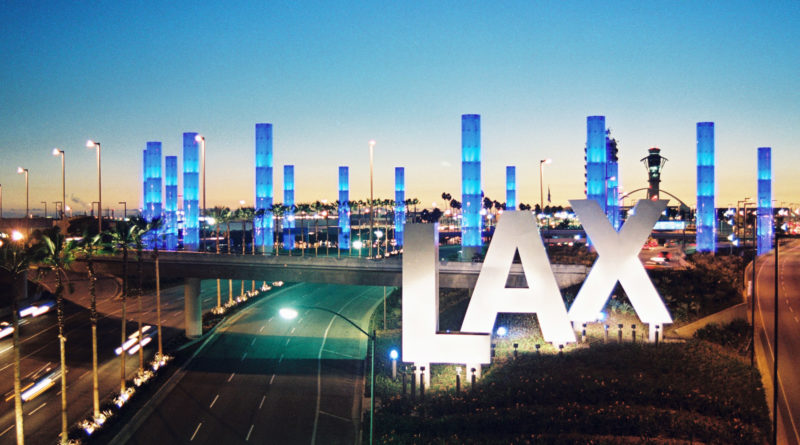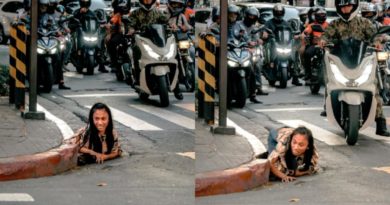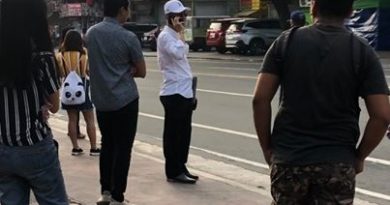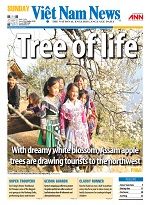OP-ED COLUMN: US VISA – America trips
AS the remaining superpower in the world, the United States is sure-footed. Armed with statistics and recurring polls, US politicians, economists, civic organizations had been able to craft programs and pursue policies that appear to match what the pulse of the nation is at any given time.
That is, until Candidate Donald Trump beat the odds and became America’s 45th President. In fact, Mr. Trump cannot let go of the achievement, taunting the Democrats for having lost the 2016 election that Hillary Clinton should have won.
It is a stumble that the US is still trying to get up from.
My trip to California and Texas confirms this dilemma.
The Democratic National Committee just filed a lawsuit against Mr. Trump, members of his family and his 2016 election campaign, and including the Russian government for conspiring to interfere with the outcome of the 2016 presidential election.
There is a feeling within the Democratic base, including those from the commuting class between Riverside and Los Angeles, that the lawsuit would be distracting from the Mueller investigation since the essential elements put forward in filing the lawsuit come from news articles and published reports released by the congressional committees and Mueller actions, including the recent raid of the offices and home of Michael Cohen, President Trump’s personal lawyer.
Greg who uses the Metrolink believes the lawsuit would not prosper. Nor will it change the perception of Trump within his base. Conservatives and Evangelicals turn a blind eye to Trump’s past indiscretions saying that the President’s action supporting the evangelical and conservative programs show that Trump is a changed man.
Raquel, another Filipino-American who takes the Metrolink commuting from home to work, is an accountant.
Greg and Raquel belong to the sizeable Filipino-American community in theLos Angeles-Long Beach-Santa Ana, CA Metro Area recorded at numbering 463,626 in the 2010 census.
The number of Filipinos migrating and visiting the United States has not abated. America remains the first choice of most Pinoys. Given the 4 million kababayan in the US, this preference is understandable.
Quality of life is the principal reason for migrating. Daily news about corruption, killings, criminal activities, preventable accidents, traffic and gridlock that virtually stops the country on its track, losing billions in productive hours plus the continuing lack of opportunities are what impel Filipinos to move away from the beaten domestic path and seek a different track.
Reliability of transportation that keeps a worker’s life running on time and on schedule is a benefit that the half-a-million Filipinos community in the Los Angeles-Long Beach-Santa Ana Metro area enjoys on workdays or weekends.
Now on its 25th year, Metrolink was set up to ease the traffic that affects commuters in Los Angeles, Riverside, Orange, San Bernardino and Ventura counties, collectively known as the inland empire. Metrolink has reduced car trips by 8.7 million annually, a “proven effective relief valve taking enough pressures off the freeways to avert gridlock.”
Two of my daughters live in Riverside and Los Angeles. Since both are working or have full-time schedules, I told them not to worry about my mobility since the Metrolink runs on time, on schedule.
Xialen and her hubby brought me to the Riverside station: clean surroundings, car owner-commuters at ease to
leave their cars in open parking because Metrolink patrols ensure safety. The elevators were working allowing elderly, senior citizens and persons with disability to go up or down to cross to the other platform.
The ticket dispensers were working. Insert the correct bill, press your destination and the ticket drops. No paper or other garbage, in some cases fake coins inserted to cheat the machines.
Trains arrive on time, on schedule. The double decker has upholstered seats, some with tables that allow the commuter to work on his or her laptop for the two-hour trip.
Two days after my arrival, my daughters and son-in-law brought me to Las Vegas and the Grand Canyon – two items on my bucket list.
For the 20-plus plus that I lived in the United States – as an exile, activist, journalist and immigrant advocate – I had never been to America’s Most Seen City (or should it be “Sin?”). Vegas has transformed itself into a microcosm of what and where Americans may want to be. For the non-gamblers there are shows to watch and a tour of the city during the day and surely by night, a walk from one hotel casino floor to another, accentuated by replicas ofrenowned international landmarks – the Statue of Liberty, Pharaoh, Eiffel Tower, the night life of New York.
Miguel, who works as a waitperson at the Tender Steak and Seafood restaurant of the Luxor Hotel, traces his Filipinos roots from Ilocos. He’s not sure exactly where since it never occurred to him to inquire where his grandparents came from. It was only recently that he began tracing his migrant family’s journey. Miguel is still single at 50+ years, busy working and enjoying life. Now as his life starts to wind down, he is thinking of visiting the Philippines with the hope of finding a partner for life.
Then we embarked on an eight-hour drive to the Grand Canyon, arriving late at night tired and hungry. We tried a Pizza Place close to the hotel where we were staying. As we were ordering pasta and soup, I noticed that the cashier had a Filipino accent. Sure enough, she was an intern with a J-1 exchange visitor visa. Marifielis a senior student at the Liceo de Cagayan who is earning and learning the American way. She says she is earning more than what her full-time working friends earn back home.
Another Filipina J-1 visa holder was our food server. Both Claire and Marifiel are hospitality and restaurant management students. Claire, however was on a three-month OJT stint. Marifel as an intern has a one-year period to soak as much of the American culture and earn green.
The night manager at the Best Western in Grand Canyon was also a Filipina HRM senior at De La Salle. Given the time, I was sure there are more Filipino J-1 visa students as well as B-1/B-2 business and visitor visa holders since more than five million people visit the Grand Canyon each year.
It has been more than 30 years since my last visit to the South Rim. The place where I stayed before, Bright Angel Lodg,e was still there, with the fireplace that warms visitors in winter. A lot has changed – for the better: new trails and viewing cliffs allow visitors to watch the sunrise at Hermits Trail or Hopi Point. I was wrapped like a burrito with a white blanket since the wind factor brought the temperatures to chilling levels – too cold for spring.
Cold as it was, the Grand Canyon sunset and sunrise would be just as spectacular as it was more than 4 million years ago. Next stop: Texas. / ON / All photographs, news, editorials, opinions, information, data, others have been taken from the Internet ..aseanews.net | [email protected] | For comments, Email to : Icarus d’ Greek | [email protected] | – Contributor











